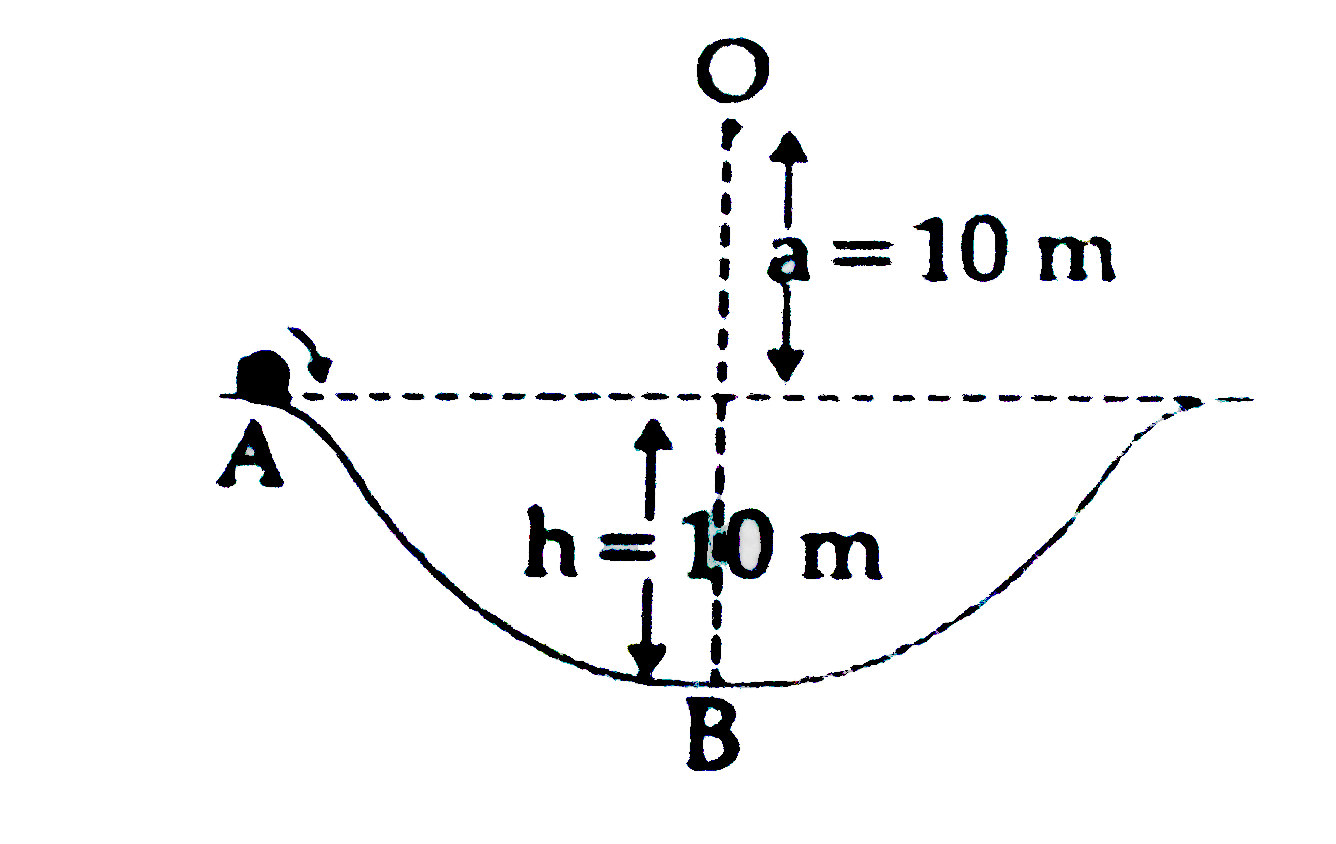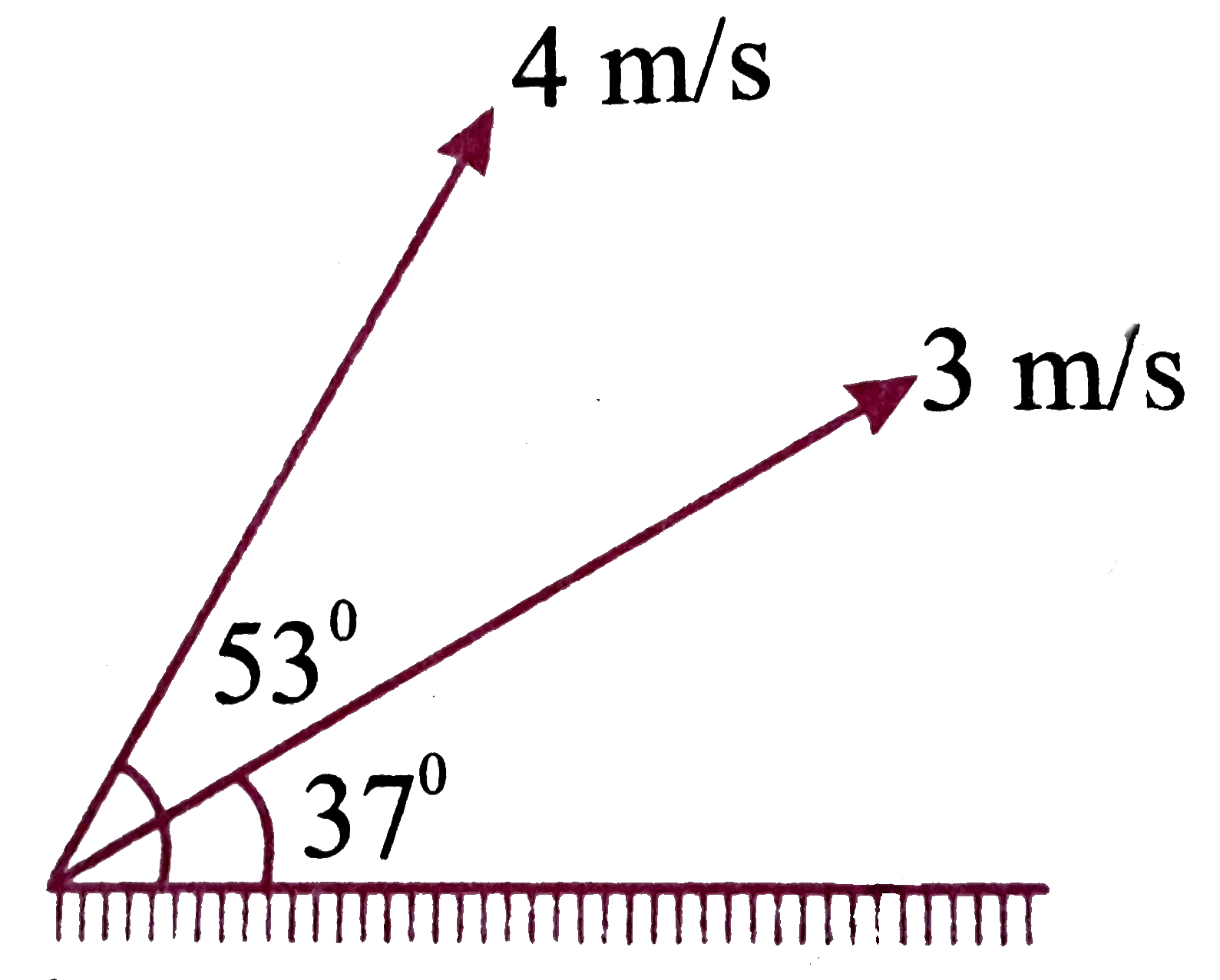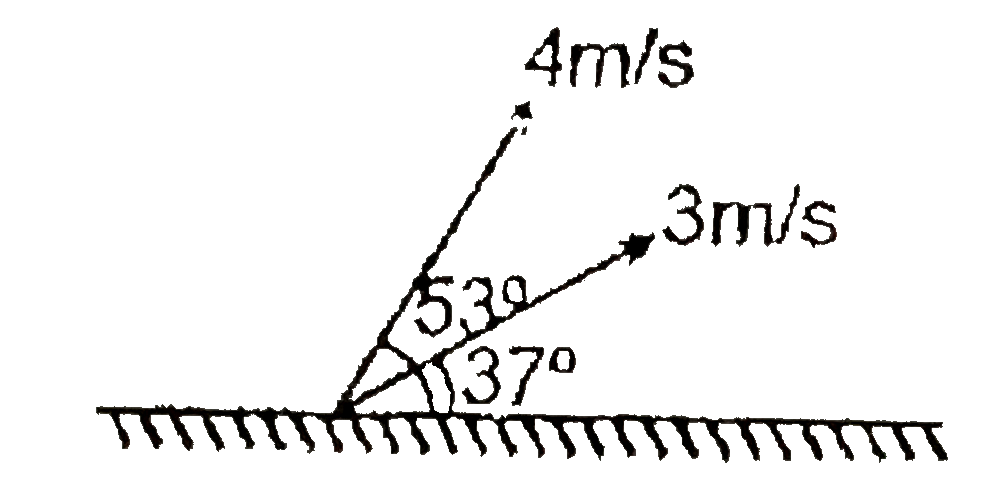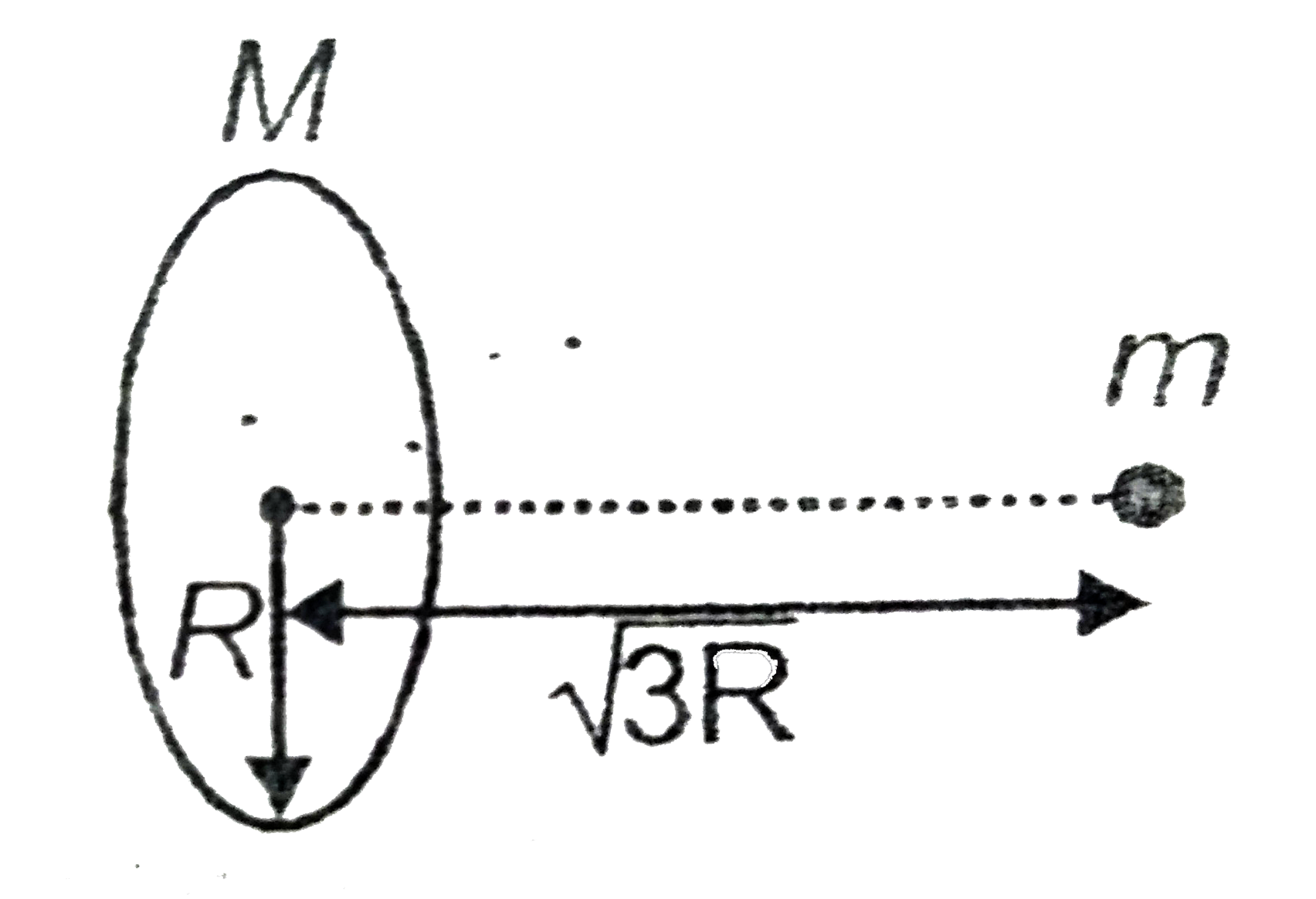A particle of mass 20g is released with an initial velocity 5m/s along the curve from the point A, as shown in the figure. The point A is at height h from point B. The particle slides along the frictionless surface. When the particle reaches point B, its angular momentum about O will be : (Take g=10m/s2).

2kg−m2/s
8kg−m2/s
6kg−m2/s
3kg−m2/s
The correct Answer is:A
NA
Topper's Solved these Questions
Similar Questions
A particle is projected with a velocity 10 m//s at an angle 37∘ to the horizontal. Find the location at which the particle is at a height 1 m from point of projection.
View SolutionA particle of mass m=5.00kg is released from point A and it slides on the frictionless track shown in figure. Determine (a) the particle's speed at points B and C and (b) the net work done by the gravitational force as the particle moves from A to C.

View Solution
Knowledge Check
Two particles are projected with speed 4m/s and 3m/s simultaneously from same point as shown in the figure. Then:
 ATheir relative velocity is along vertical directionBTheir relative acceleration is non-zero and it is along vertical directionCThey will hit the surface simultaneouslyDTheir relative velocity is constant and has magnitude 1.4m/s
ATheir relative velocity is along vertical directionBTheir relative acceleration is non-zero and it is along vertical directionCThey will hit the surface simultaneouslyDTheir relative velocity is constant and has magnitude 1.4m/sTwo particles are projected with speed 4m/s and 3m/s simultaneously from same point as shown in the figure. Then :
 ATheir relative velocity is along horizontal direction.BTheir relative acceleration is non-zero and it is along vertical direction.CThey will hit the surface simultaneously.DTheir relative velocity is constant and has magnitude 1.4m/s
ATheir relative velocity is along horizontal direction.BTheir relative acceleration is non-zero and it is along vertical direction.CThey will hit the surface simultaneously.DTheir relative velocity is constant and has magnitude 1.4m/sTwo particles A and B are moving as shown in the figure. Their total angular momentum about the point O is
 A9.8kgm2/sBzeroC52.7kgm2/sD37.9kgm2/s
A9.8kgm2/sBzeroC52.7kgm2/sD37.9kgm2/s
Two particles A and B are moving , as shown in the figure .

Their total angular momentum about the point O is
View SolutionA point particle of mass m is released from a distance √3R along the axis of a fixed ring of mass M and radius R as shown in figure. Find the speed of particle as it passes through the centre of the ring.

View SolutionTwo particle A and B are moving as shown in the figure

Their total angular momentum about the point O is
View SolutionA particle of mass m is projected with a velocity v making an angle of 45° with the horizontal. The magnitude of the angular momentum of the projectile about the point of projection, when the particle is at its maximum height h, is
View SolutionA particle of mass m is projected with a velocity μ at an angle of θ with horizontal.The angular momentum of the particle about the highest point of its trajectory is equal to :
View Solution
